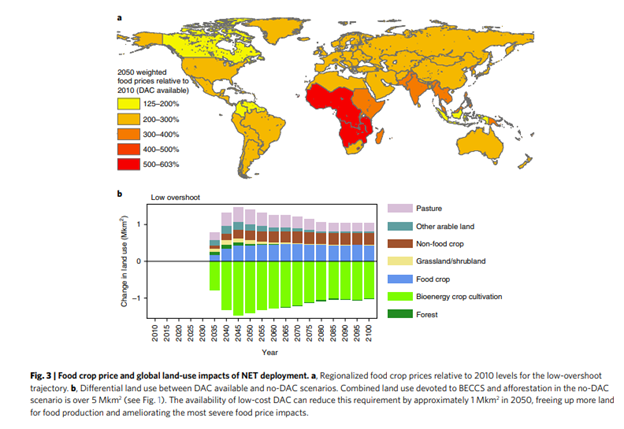Food–Energy–Water Implications of Negative Emissions Technologies
Scenarios for meeting ambitious climate targets rely on large-scale deployment of negative emissions technologies (NETs), including direct air capture (DAC). However, the tradeoffs between food, water, and energy created by using different NETs are unclear. Here we show that DAC could provide negative emissions by 2035 (equivalent to 7% of 2019 global CO2 emissions) based on current price and performance assumptions. DAC in particular could exacerbate the demand for energy and water. This could cause staple food crop prices to rise by approximately 500% relative to 2010 levels in many parts of the Global South, raising concerns over the equity of using NETs. Delaying aggressive global mitigation action significantly increases the need for DAC to meet climate targets. This would exacerbate increased demand for energy and water still further, worsening the inequity.

Modelling results suggest that DAC technology can make substantial contributions before mid-century to the deep emissions reductions necessary to meet a 1.5 °C end-of-century temperature increase goal. Given the global ambition to aggressively mitigate climate change in the near future, DAC could have an impact as early as 2035, even without increasing current financial and energy inputs. It is crucial that the global community act swiftly to implement decarbonization policy. Delaying action will only increase the magnitude of food, energy, and water tradeoffs in the future.
For the full report, download the file below.


